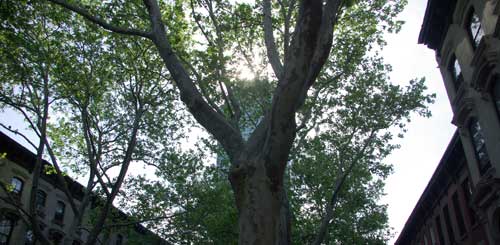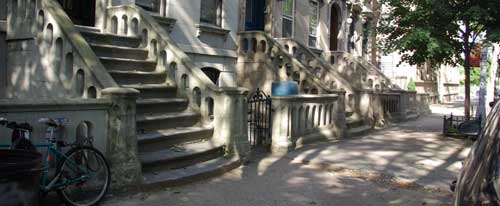October 31st, 2008
The former curator of Harvard University’s Collection of Historical Scientific Instruments, William Andrewes, has become a “dialist,” or maker of sundials. His idea is to base the dial on an unusual type of map, and to center the map on the very spot where the dial will stand. The map’s meridians of longitude serve as the sundial’s hour lines, creating a union of time and space for that particular location—something no dialist or clockmaker had ever before achieved.
An inspiration for Andrewes’ Longitude Dial was a 1610 map by Nuremberg mathematician Franz Ritter (below, thanks Smithsonian website). It placed his city at the center, so that the meridians of longitude emanating from the North Pole could also serve as the hour lines of a Nuremberg sundial.
Article on Andrewes by Dana Sobel at Smithsonian.com
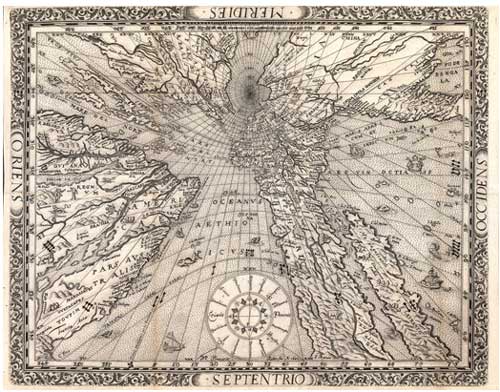
October 30th, 2008
A project by Jiyeon Song
Using a complex array of perforations, the One Day Poem Pavilion‘s surface allows light to pass through creating shifting patterns, which–during specific times of the year–transform into the legible text of a poem. The specific arrangements of the perforations reveal different shadow-poems according to the solar calendar.
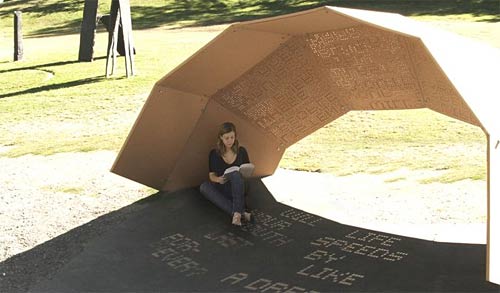
September 28th, 2008
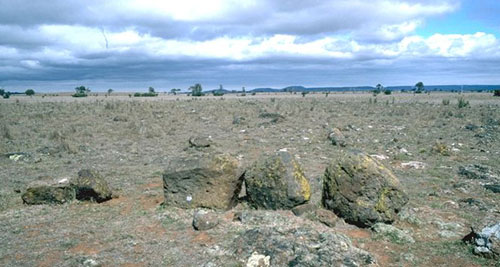
Stone arrangements in Victoria, Australia, such as a detail of the Wurdi Youang above (photo by Clive Ruggles) are possibly related to the extensive system of Australian Aboriginal astronomy.
More info: Astronomy of the Boorong paper, and the book Dark Sparklers.
August 31st, 2008
Central tower as (proposed) gigantic sundial:
In the New York World’s Fair of 1939, a hugely popular exhibit was Democracity: a gigantic diorama of a utopian society set in 2039. From twin rotating balconies, the visitors looked down on what was supposed to be “a perfectly integrated garden city of tomorrow” and surrounding countryside as seen from seven thousand feet up. The city was a carefully planned community built on the shores of a river with the streets radiating out from a central tower–a perfect giant urban sundial setup, (although this may not have been what they had in mind).
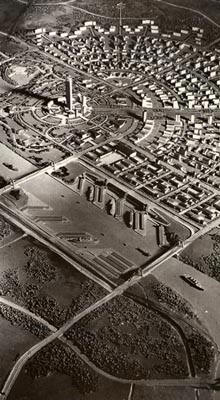
July 25th, 2008
The Grainger Observatory at Phillips Exeter Academy in New Hampshire is a state of the art facility for astronomical research, and is open to the public on clear Friday evenings when school is in session.

July 22nd, 2008
Another contender for largest sundial in the western hemisphere—the sundial in Carefree, Arizona. It was built in 1959 in honor of K.T. Palmer, the founder of the town, and is 72 feet long and 35 feet high. More info here and here.
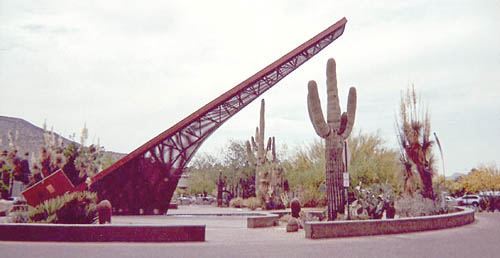
July 11th, 2008
? Full Sun on grid: Friday, July 11 ? 8:24 P.M.
? Half Sun on grid: Saturday, July 12 ? 8:25 P.M.
See below for more info.
June 22nd, 2008
Gnomon from Socrates Sculpture Park at 6:30 pm
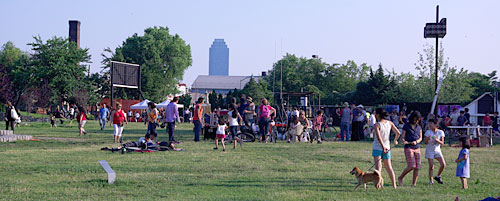
May 31st, 2008
Another contender for the world’s biggest sundial today is in the Torne Valley, north of the Arctic Circle. It is 38.33 m. in diameter and is situated at 23.28
May 30th, 2008
Shadow indicates brownstone stoops on 45th Ave. between 11th and 21st streets at 9am on May 30th.
